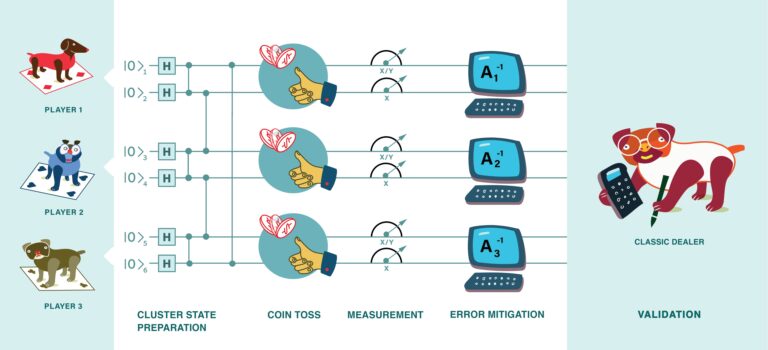Researchers developed an algorithm that showed a basic quantum phenomenon: the immediate effect of one variable on other variables

Will quantum computing live up to the world's great expectations? Quantum mechanics is a physical theory that describes the behavior of nature on a very small scale. That is, the world of particles. In the last decade, countries and some of the largest commercial companies in the world - such as IBM, Google, Microsoft and Amazon - began to invest a lot of effort in the development of computing based on quantum mechanics. Today there are first examples (prototypes) of quantum computers, and the ambition is that in about a decade they will use unique quantum properties and thus significantly increase the calculation power compared to the classical computer. The operating principle of quantum computing is superposition - a quantum phenomenon in which one particle can be in several places at the same time. In the quantum computer, this particle is the quantum qubit.
"In the future, it will be possible to run certain programs on the quantum computers that will be able to perform complex calculations and solve extremely difficult problems, which a normal classical computer cannot solve. "For example, they will be able to factorize (decompose into factors) large numbers with relative ease and thus help break encryption systems," says Prof. Emanuel Della Torre from the Department of Physics at Bar-Ilan University, who worked with his team on the development of quantum technologies.
In their latest research, which won a research grant from the National Science Foundation, Prof. Della Torre and students Miron Shafer and Daniel Atzitz developed an algorithm whose function is to identify and visualize quantum phenomena in existing quantum computers. They connected through various servers (for example Microsoft's and Amazon's) to the quantum computers in the US used for experimental purposes, of IBM, the Honeywell Corporation and the start-up IONQ, and by means of the algorithm they conducted a simulation, a simulation, of quantum phenomena.
One of the basic quantum phenomena that the researchers wanted to illustrate is Nonlocality (lack of location); According to which, as soon as a particle is measured in a certain place - it immediately affects other particles, which are further away from it. In the case of quantum computing, the particles are, as mentioned, the qubits. The researchers gave the computer a command to measure a qubit - whether it is at 0 or 1 - and checked using the algorithm how this affected the other qubits. They discovered that in one computer (Honeywell's) the measurement of the qubit immediately affected the other qubits - the result of the measurement of all of them changed (for example they changed from 0 to 1). If it were a classical computer, where there can be no immediate effect between bits, the algorithm would give as a result a number that is always lower than seven eighths, 87.5%. A quantum computer, on the other hand, is able to exceed the limit and give 100%. On Honeywell's computer the result was 97%.
"The measurement of one variable that immediately affects the measurement of other variables is proof of quantum mechanics, which contradicts classical mechanics. However, we only identified it for sure on one computer. The rest of the computers were limited due to noise - unwanted environmental effects that hide the immediate effect.
From here we got an answer to our research question - which, among other things, examines the nature of the existing quantum computers - and we realized that they are still not efficient enough and not free from errors. In the future we would like to expand the research to computers that include additional qubits and less noise in their environment. Honeywell's computer consisted of only ten qubits. Complex operations, such as the factorization of large numbers, require computers with hundreds of thousands to millions of qubits, and these will only be built in ten years at best," explains Prof. Della Torre.
He further adds that "it is true that the contemporary quantum computers are far from perfect, but we see that they know how to run quantum algorithms. These algorithms are the reason for the huge investment of countries and huge companies in the development of quantum computing".
Life itself:
Prof. Emanuel Della Torre, 42, married with three children (9-year-old and 14-year-old twins), lives in Givat Shmuel ("opposite the university"). He was born in Italy and came to Israel when he was 18 years old as part of a Bnei Akiva program ("I came for a year and stayed for life"). In his free time, he likes to sail a sailboat ("a hobby that helped me overcome the 40-year-old crisis. Another way was my 41st birthday") and skiing ("a hobby that started in my childhood. I haven't been excited about it for a long time, but my children still are").
More of the topic in Hayadan:
- Quantum teaching - superposition of experiment and theory
- "Quantum computing brings us to worlds that were impossible in classical computing"
- First simulation of a wormhole on a quantum computer
- Fundamental concepts in quantum physics: Bell's inequality - which was the basis of the Nobel Prize
- Quantum computation using hybrid algorithms
